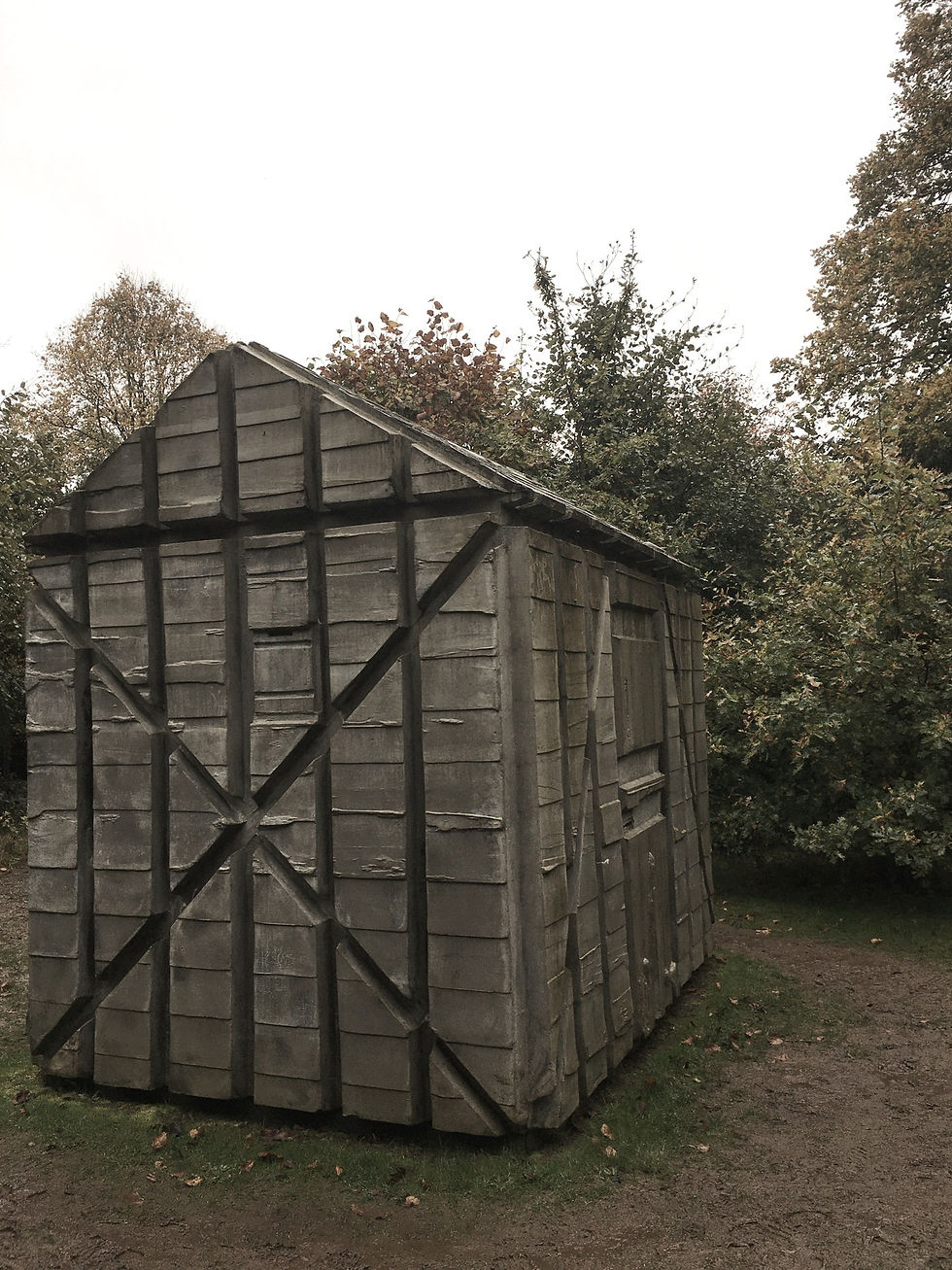Anish Kapoor at Houghton Hall. A grey day brightened.
- carldurban
- Nov 10, 2020
- 4 min read
I had wanted to visit this exhibition ever since I heard about it late last year. Then 'that thing' happened and time went ticking by. Finally in the week before it finished I managed to find the time and booked a slot. The weather looked bleak but surely that would change before we were due to go. No it didn't. It rained all day, all the time.

However, I was not to be put off, neither was my daughter, India (https://indiamaeart.com/), so macs and wet weather gear on we ventured off to west Norfolk and the wonderful setting of Houghton Hall. Although I wanted to see the Anish Kapoor exhibition I was just as keen to see the other permanent sculptures in the grounds, including work by; Richard Long, James Turrell, Rachel Whiteread and Philip King to name a few.

Having visited the Damien Hirst exhibition in 2018 I was keen to see how the Kapoor work would work in this setting. There were a few monolithic pieces outside the hall, which were made from granite, onyx and limestone. These certainly had presence and the way they had been cut, marked and treated gave some really interesting viewpoints, reflections and details. However, they didn't however my attention as much as would have wished, I was more fascinated with them as pieces from nature and what that had created rather than the artist's hand or the artist workshop's many hands...
With all the shenanigans going on there really was only two rooms open for visitors, which clearly was shame as it limited the amount of work that potentially could have been exhibited. With the Hirst exhibition you not only saw a lot more work on display but it also gave you a glimpse of the inside of the hall in all of its grandeur.
The main room you could access was a display of concave, coloured mirrors placed very high in the room that created some very interesting reflections and views but also the elevation of the work meant the interaction was limited and distant. It was almost as if the work was too precious to be put down at a level with the viewer. It looked down on you.

In another outdoor room, the South Wing Gallery a smaller selection of work was on display. This was more of the work you expected from Kapoor, although even this was on a very small scale. In this we were treated to Kapoor's blackest black (https://www.theguardian.com/artanddesign/shortcuts/2019/aug/05/black-30-anish-kapoor-and-the-art-worlds-pettiest-funniest-dispute) in a slightly portrait shape, recessed into the wall. It did deceive and make you look very hard at something that you really couldn't determine. If you don't already know the story of the blackest black, take a look here: (https://www.frieze.com/article/artist-makes-blackest-black-paint-world-protest-anish-kapoor).

Back outside there was one other dominant piece, a large concave mirror facing the hall, Sky Mirror (2018). This satellite shaped installation reflected mainly the sky, which was very grey, with no clouds. Which was a shame as on a blue sky with nice white fluffy clouds it would have looked far more impressive. The back did provide some interesting images, as being convex and facing the ground it picked up a lot more going on at floor level.

I wasn't sure what I made of the exhibition, it didn't overwhelm me or indeed underwhelm me it left me somewhere in between. It felt very manufactured, machined with little or no indication of the artist's hand, maybe this was the point, maybe it was more about the finish and the conceptual idea that made these items come about. I have been an admirer of Kapoor's (https://anishkapoor.com/) work for a while (blackest black not withstanding), particularly his work with pigment and the use of mirrors and light, I just felt there could have been more. I blame Covid.

India and I then started looking around the permanent sculptures, of which there are many impressive pieces and from some very renowned artists. Again the weather didn't help but it also didn't stop us, in fact on some it gave a completely new view, especially the Richard Long 'Full Moon Circle' with the rain on the slate was stunning. James Turrell's 'Skyspace: Seldom Seen' would have been a very contemplative space on a day when you could actually sit down and look up, neither of which we could do without getting soaked. What it did do on a very grey day was to still blind you with the amount of light that poured in from above. Striking, really striking and something that need to be re-visited.

The Rachel Whiteread 'Houghton Hut' was a stark, sombre installation, that you had to work your way through the trees to find and then circle like some prowling animal looking for an opening, which there clearly wasn't, just the evidence of where the door was when the concrete was poured in.

Richard Long's 'A Line In Norfolk' is Richard Long at his best and reflect's some of his very early and best known work. Straight, unerring and dividing. It's simplicity is perfect and the setting along with the time of year with all the autumnal gold works so well.

Until next year.


























Comments